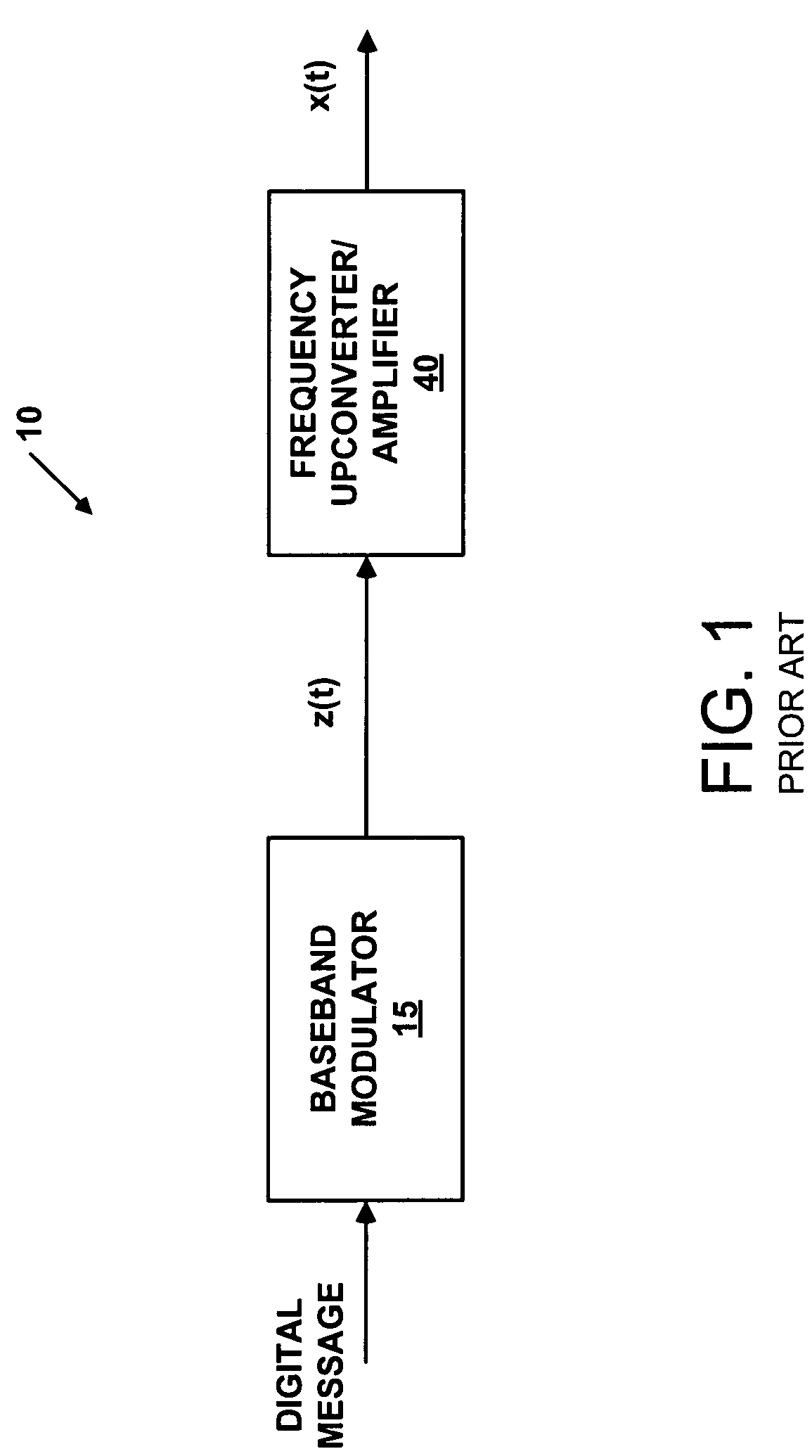Methods and apparatus for reducing peak-to-RMS amplitude ratio in communication signals
a technology of rms amplitude and communication signals, applied in the field of pulse amplitude modulation, can solve the problems of reducing the power spectral density (psd) of the signal, reducing the quality of both standard measures, namely in-band quality measures, and distortion, so as to reduce the peak-to-rms amplitude ratio without substantially degrading the power spectral density of the signal
- Summary
- Abstract
- Description
- Claims
- Application Information
AI Technical Summary
Benefits of technology
Problems solved by technology
Method used
Image
Examples
Embodiment Construction
[0027]FIG. 1 is a block diagram of a conventional pulse amplitude modulation (PAM) signal generator 10, which is well known in the prior art. Many modern communication systems transmit digital messages using a scheme called pulse amplitude modulation (PAM). A PAM signal is a frequency-upconverted sum of amplitude-scaled, phase-shifted, and time-shifted versions of a single pulse. The amplitude-scaling and phase-shifting of the nth time-shifted version of the pulse are determined by the nth component of the digital message.
[0028]In the field of communications systems, the broad class of PAM signals includes signals commonly referred to as PAM, quadrature amplitude modulation (QAM) and phase shift keying (PSK), and many variants recognized by those skilled in the art of communications theory. The PAM signal is generated in two parts, namely a baseband modulation process and a frequency-upconversion and amplification process, as illustrated in FIG. 1.
[0029]Referring still to FIG. 1, a ...
PUM
 Login to View More
Login to View More Abstract
Description
Claims
Application Information
 Login to View More
Login to View More - R&D
- Intellectual Property
- Life Sciences
- Materials
- Tech Scout
- Unparalleled Data Quality
- Higher Quality Content
- 60% Fewer Hallucinations
Browse by: Latest US Patents, China's latest patents, Technical Efficacy Thesaurus, Application Domain, Technology Topic, Popular Technical Reports.
© 2025 PatSnap. All rights reserved.Legal|Privacy policy|Modern Slavery Act Transparency Statement|Sitemap|About US| Contact US: help@patsnap.com



